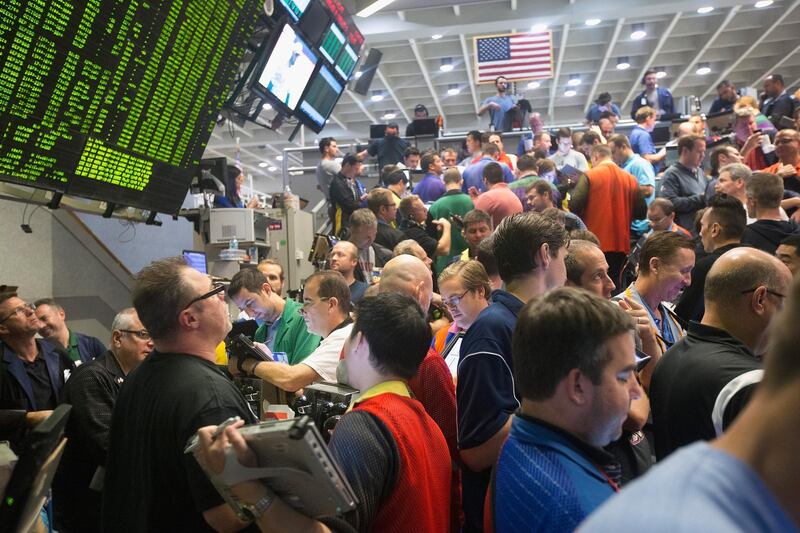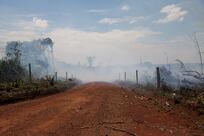Last week I attended the fifth Global Commodities Outlook Conference organised by traders Richcomm under the aegis of the Dubai Multi Commodities Centre and held in the newly refurbished Almas Tower at the heart of the free zone.
There was more optimism in the air than I can remember for some years, despite the backdrop of one of the worst weeks for global stock markets since the global financial crisis.
A straw poll revealed that 10 per cent of the audience thought the worst of this sell-off was over, 15 per cent thought it would get worse and the vast majority remained undecided. In the event stocks rallied in the next few days, but who knows what comes next?
Panel sessions featuring some 30 experts naturally focused on commodities rather than shares.
At first I wondered if this was not unfortunate, given the immense interest in global stock markets. But then I began to realise that this might actually have been wholly appropriate.
Anybody who follows the long cycles in asset classes knows that some are almost always going up and some coming down, and part of the art of investing is to pick those with a future rather than those whose best days may be in the past.
It’s always hard to get this right, of course. But a more than 10 per cent correction in US stocks after two years of straight rises was significant, as was the fact that bond prices fell at the same time.
Could this have been the top for global stock markets?
It is possible but we won’t know that for sure until it is too late for us to take advantage as investors. But the balance of probabilities suggests the most overvalued US stock market since 1929 has topped out, or is very near to it.
At the same time the all-important US Treasury market has also begun to turn down with 10-year treasury yields finally succumbing to the pressure of four Federal Reserve rate hikes. Yield and bond prices move in opposite directions.
It is very rare to see bond and stocks heading in the same direction. Normally there is an arbitrage between them and they move in away from each other.
Note, then, that the haven of the US bond market, the largest and most liquid capital market in the world, is therefore currently closed to investors.
A long way further down the cycle of investment you will find commodities. Silver, gold and agricultural commodities are lowest in this group followed by base metals and then oil and gas, which sit higher up the curve.
Now, given that it was an inflation scare from rising US salaries that tipped the stock market over earlier this month, is it not reasonable to assume that commodity prices will benefit from inflation and so advance up the investment curve, even while stocks and bonds are slipping into a bear market?
Certainly our conference host Paresh Kotecha, chief ececutive and chairman of Richcomm, seemed to sum things up correctly when he said 2017 was probably "the calm before the storm".
_______________
Read more from Peter Cooper:
[ Why every long-term expat should buy a property in the UAE ]
[ Silver shaping up to outshine gold in the months ahead ]
[ Will 2018 mirror 2011 as a landmark year for precious metals? ]
_______________
But will the 2018 storm necessarily be bad for commodities?
The energy panel was mainly comprised of traders but they did their best to think further than the next trade. The bears considered an electric car parked in front of the DMCC headquarters as symbolic of an impending plunge in oil prices due to a breakdown of Opec discipline and soaring US shale oil production.
It is true that US oil production this year of 10.25 million barrels per day is due to surpass both Saudi Arabian and Russian output, as Matthew Stanley of Freight Investor Services pointed out.
But I was more impressed by some of the bullish talk about oil prices, despite the 10 per cent correction in the early February sell-off and a small rally last week.
Venezuela and Mexico are in serious trouble (a shutdown in Venezuela alone would take out 500,000 to 600,000 bpd), and with the world economy still bounding ahead at the moment (stock markets may be predicting trouble six months ahead but there is nothing to worry about now), oil supplies could still get tighter and prices rise from here.
Don’t forget how oil soared to $145 a barrel in July 2008, just before the global financial crisis of that autumn. Is another run up in prices possible now? Could that not also actually help to cause another crisis?
Nobody on the panel was suggesting that, but then nobody sitting on a panel ever gets these extreme movements in commodity prices right, although they clearly do happen.
It was the same story for precious metals, always a favourite item at this conference in the City of Gold.
Veteran broker Gerhard Schubert took the panel chair and cautiously predicted a $1,300 to $1,350 trading range for gold this year, and even the sector bulls are not much above $1,400 an ounce as the likely high for the year.
Yet, by last Friday, gold was already trading above $1,360 an ounce, after its best week in two years.
This looked like a classic flight to safe haven assets. For with stocks and bonds falling together where else can you hide your money?
Bitcoin and the crypocurrencies are another answer, and this asset class got a fair amount of attention at the
conference, considering that this is not a commodity and was not on the agenda.
And yet this is an "asset class" that a whole series of widely respected economists, analysts, bankers and other financial professionals see as a Ponzi or pyramid scheme. Its wild drop from $12,000 to $6,000 in early February, before rebounding to $10,000 last week, hardly marks it out as an obvious safe haven.
Given that bitcoin peaked at almost $20,000 in December this already has the making of a bubble that has burst.
Will the money from all this bust speculation now find its way into commodity markets? Gold and silver prices have been very much higher in the past, for example.
Ask Mr Schubert whose youthful trading career in precious metals saw him trade silver at $50 an ounce in 1980, the last person to actually buy silver at this price. It’s about a third of that price today.
Could history be about to repeat itself with a commodity boom as stock and bond markets, and cryptocurrencies, sell-off? It’s an open question in such turbulent markets, but far from a foolish one.
Peter Cooper has been writing about Arabian Gulf finance for 22 years





